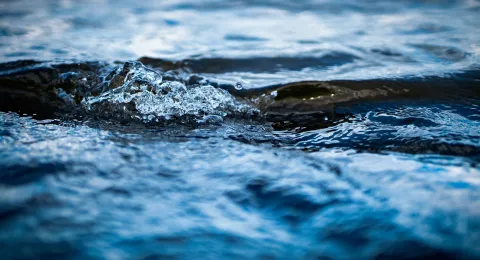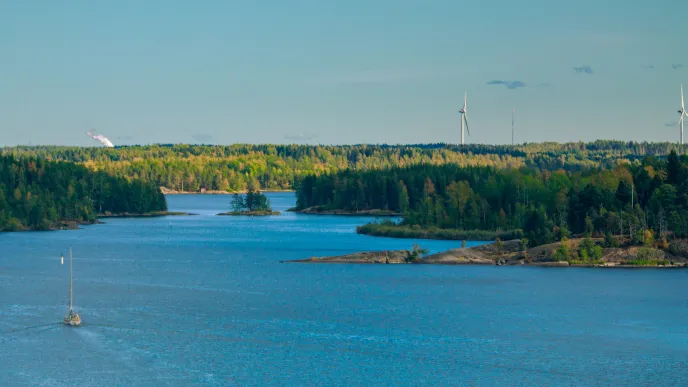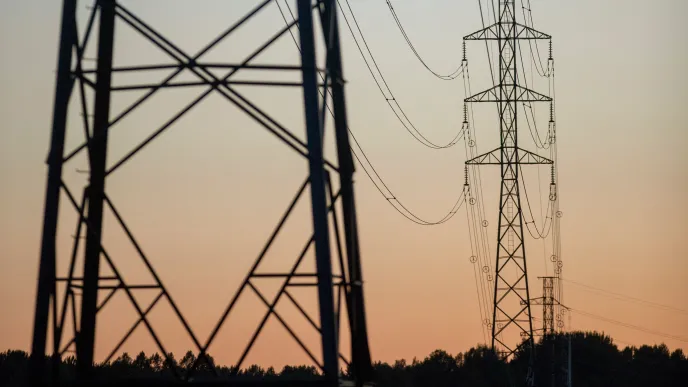The dissertation of LUT’s Alena Lohrmann sheds light on the use of water in the global energy sector. The primary objective of Lohrmann’s study was to assess the water footprint of the power sector from the perspective of the amount of water used in power plants.
The energy sector depends on water
In the energy sector, the technologies currently used for electricity generation rely heavily on water availability. Hydropower plants use water to generate electricity. Thermal power plants – coal, gas, oil and nuclear alike – require water for cooling. Even solar power plants need water for cleaning their modules.
“My study revealed that the global power sector currently consumes about 88 cubic kilometres of water annually, of which about 20 cubic kilometres evaporate due to the cooling of thermal power plants,” Lohrmann outlines.
Due to climate change, the world’s water supply is becoming more unreliable, more unpredictable and scarcer in many areas. Therefore, the energy sector should seek solutions for reducing its water usage. However, analysing the reduction potential of water use is difficult, as power plant operators do not usually disclose the amount of water they need. That makes Lohrmann’s findings very interesting.
Switching to renewable energy saves water
Lohrmann investigated the global water demand of thermal power plants from 2015 to 2050 at five-year intervals. She says the power sector could save a significant amount of water by decommissioning the old thermal power plant fleet. The plants should switch to renewable energy sources, which require less water.
“We live on a blue planet, but freshwater resources are very limited and distributed unevenly across the world. The gradual decommissioning of the thermal power plant fleet during the energy system transition can annually ‘save’ about 98% of this cooling water, allowing it to be allocated for other purposes, such as food production,” Lohrmann says.
In brief, here are Alena Lohrmann’s recommendations to the thermal power sector:
- Transition from heavily water-demanding coal-based electricity generation to combined cycle gas power plants (which could in the future be converted to use synthetic fuels).
- Transition from the widespread use of fresh water and seawater for cooling to the use of reclaimed water.
- Restrict the use of once-through cooling and transition to tower cooling or, more preferably, to dry cooling.
- Ensure that newly built thermal power plants are in regions characterised by low water stress and/or have abundant water resources (for instance, seawater in coastal areas).
More power transmission interconnections and saving water in the supply chain
Lohrmann calculated that in most European regions, the water demand of the energy sector will decrease by the year 2050 as a result of the projected energy transition, but in some regions, it will increase on average by 14%. She maintains that establishing power transmission interconnections among regions of Europe would be beneficial in terms of securing water resources.
Lohrmann also studied cobalt, which is needed for the energy transition as a material for products such as batteries and electronics. She found that the effective recycling of cobalt could considerably reduce water consumption in the entire cobalt supply chain.
“The reduction of the water footprint throughout the supply chain of all products and services that require electricity can be considered a side benefit of the energy transition and should support its acceleration,” Lohrmann points out.
New thermal power fleet may increase the power sector’s water dependence
Although a number of countries have committed to reducing the carbon emissions of their power sector to tackle climate change, many continue to add fossil-based capacity to their power generation profile. Using publicly available data on announced and financed thermal power plants, Lohrmann estimated the potential future development of the water footprint of the power sector.
“We might see an increase of up to 54% in the water demand of the thermal power sector by 2050 compared to the 2020 level if all these power plants are commissioned. The increasing uncertainty of water resources should be taken into account when designing the future global power system, and low water-dependence in electricity production may prove to be the best strategy going forward,” Lohrmann points out.
The recommendations for the future electricity generation mix are as follows:
- Increase the shares of low-water-demand solar PV and wind power and decrease the share of thermal power generation in the final generation mix.
- Restrict the installation of new in-stream hydropower capacities to regions characterised by low water stress.
The dissertation stands out by combining different disciplines such as energy technology, water footprint analysis and machine learning and applying them towards environmental and climate targets. The research most specifically promotes the United Nations’ Sustainable Development Goals 6 and 7: Ensure availability and sustainable management of water and sanitation for all and Ensure access to affordable, reliable, sustainable and modern energy for all.





